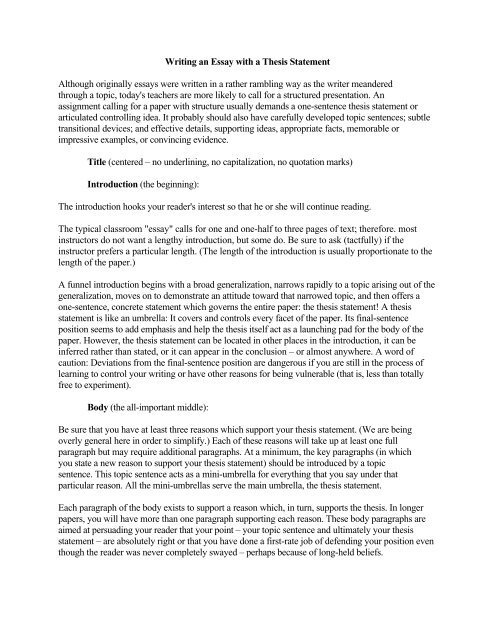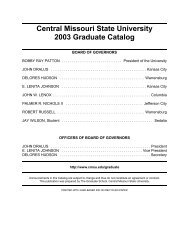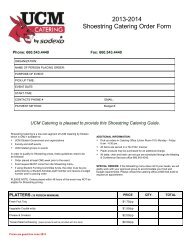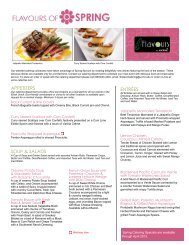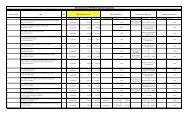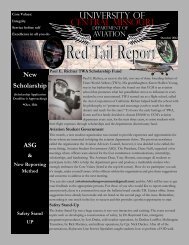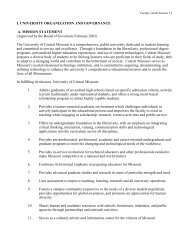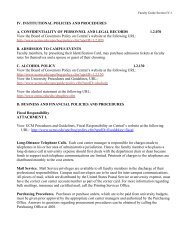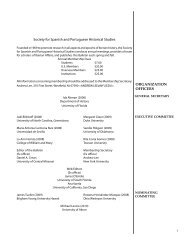Writing an Essay with a Thesis Statement Although originally essays ...
Writing an Essay with a Thesis Statement Although originally essays ...
Writing an Essay with a Thesis Statement Although originally essays ...
You also want an ePaper? Increase the reach of your titles
YUMPU automatically turns print PDFs into web optimized ePapers that Google loves.
<strong>Writing</strong> <strong>an</strong> <strong>Essay</strong> <strong>with</strong> a <strong>Thesis</strong> <strong>Statement</strong><br />
<strong>Although</strong> <strong>originally</strong> <strong>essays</strong> were written in a rather rambling way as the writer me<strong>an</strong>dered<br />
through a topic, today's teachers are more likely to call for a structured presentation. An<br />
assignment calling for a paper <strong>with</strong> structure usually dem<strong>an</strong>ds a one-sentence thesis statement or<br />
articulated controlling idea. It probably should also have carefully developed topic sentences; subtle<br />
tr<strong>an</strong>sitional devices; <strong>an</strong>d effective details, supporting ideas, appropriate facts, memorable or<br />
impressive examples, or convincing evidence.<br />
Title (centered – no underlining, no capitalization, no quotation marks)<br />
Introduction (the beginning):<br />
The introduction hooks your reader's interest so that he or she will continue reading.<br />
The typical classroom "essay" calls for one <strong>an</strong>d one-half to three pages of text; therefore. most<br />
instructors do not w<strong>an</strong>t a lengthy introduction, but some do. Be sure to ask (tactfully) if the<br />
instructor prefers a particular length. (The length of the introduction is usually proportionate to the<br />
length of the paper.)<br />
A funnel introduction begins <strong>with</strong> a broad generalization, narrows rapidly to a topic arising out of the<br />
generalization, moves on to demonstrate <strong>an</strong> attitude toward that narrowed topic, <strong>an</strong>d then offers a<br />
one-sentence, concrete statement which governs the entire paper: the thesis statement! A thesis<br />
statement is like <strong>an</strong> umbrella: It covers <strong>an</strong>d controls every facet of the paper. Its final-sentence<br />
position seems to add emphasis <strong>an</strong>d help the thesis itself act as a launching pad for the body of the<br />
paper. However, the thesis statement c<strong>an</strong> be located in other places in the introduction, it c<strong>an</strong> be<br />
inferred rather th<strong>an</strong> stated, or it c<strong>an</strong> appear in the conclusion – or almost <strong>an</strong>ywhere. A word of<br />
caution: Deviations from the final-sentence position are d<strong>an</strong>gerous if you are still in the process of<br />
learning to control your writing or have other reasons for being vulnerable (that is, less th<strong>an</strong> totally<br />
free to experiment).<br />
Body (the all-import<strong>an</strong>t middle):<br />
Be sure that you have at least three reasons which support your thesis statement. (We are being<br />
overly general here in order to simplify.) Each of these reasons will take up at least one full<br />
paragraph but may require additional paragraphs. At a minimum, the key paragraphs (in which<br />
you state a new reason to support your thesis statement) should be introduced by a topic<br />
sentence. This topic sentence acts as a mini-umbrella for everything that you say under that<br />
particular reason. All the mini-umbrellas serve the main umbrella, the thesis statement.<br />
Each paragraph of the body exists to support a reason which, in turn, supports the thesis. In longer<br />
papers, you will have more th<strong>an</strong> one paragraph supporting each reason. These body paragraphs are<br />
aimed at persuading your reader that your point – your topic sentence <strong>an</strong>d ultimately your thesis<br />
statement – are absolutely right or that you have done a first-rate job of defending your position even<br />
though the reader was never completely swayed – perhaps because of long-held beliefs.
Some teachers w<strong>an</strong>t you to admit that <strong>an</strong>other side to the issue exists <strong>an</strong>d to touch upon that<br />
position to a slight degree – usually following the body paragraphs. (This admitt<strong>an</strong>ce that <strong>an</strong>other<br />
side exists <strong>an</strong>d your ultimate disposal of it is called the refutation.) Typically you are expected to<br />
come roaring back <strong>an</strong>d cut down the other side's reasoning very decisively. Some teachers,<br />
however, may w<strong>an</strong>t you to concentrate on your side of the issue <strong>an</strong>d ignore <strong>an</strong>y other views. It is<br />
also possible that you have hinted about other sides in your introduction <strong>an</strong>d have taken care of the<br />
issue in that way.<br />
You c<strong>an</strong> actually check the quality of your content by checking over your paper, sentence by<br />
sentence, <strong>an</strong>d asking yourself if every single sentence supports the thesis statement. It should.<br />
If not – cut it!!<br />
A good paper will slide from reason to reason <strong>with</strong> grace. That is, a good paper will have smooth<br />
tr<strong>an</strong>sitions that help move your points along from one place to <strong>an</strong>other <strong>with</strong>out being too obvious.<br />
Until you have more practice, though, don't hesitate to use obvious signposts like "first," "second, "<br />
"third." A h<strong>an</strong>dout on introductions is available.<br />
Conclusion (the end):<br />
There are as m<strong>an</strong>y ways to end a paper as to begin. Ask for the h<strong>an</strong>dout on conclusions. If in<br />
doubt, ask your classroom instructor if he or she prefers a certain type of conclusion. Readers<br />
often have strong preferences for types of introductions <strong>an</strong>d types of conclusions. The main idea<br />
of the conclusion, however, is to leave your reader feeling that you were right – that you<br />
supported your thesis statement right down to the last period (<strong>with</strong> the possible exception of the<br />
part of your paper where you at least acknowledged that <strong>an</strong>other point of view exists).<br />
Long ago, a Greek thinker named Aristotle said that a good persuasive piece contains a beginning,<br />
a middle, <strong>an</strong>d <strong>an</strong> end which give the work unity. We haven't yet discovered a better or more<br />
effective way to describe unity. A good thing to remember is that although you may not think of<br />
your essay as persuasion, it really is. Every time you write, you are attempting to persuade<br />
somebody of something, if only that you are a thoughtful person, worthy of being listened to or of<br />
having your written work read.<br />
If you are a beginning writer, you might be better off just simply writing <strong>an</strong>d thinking <strong>with</strong>out<br />
paying too much attention in the initial stages to this advice. Then after you have written down<br />
some ideas, see where they seem to lead you; they probably lead to your thesis statement. Until<br />
you get the h<strong>an</strong>g of these procedures, don't hesitate to brainstorm <strong>with</strong> someone in your writing<br />
center, a place where you c<strong>an</strong> test your ideas <strong>with</strong>out jeopardy to your grade point!!<br />
The <strong>Writing</strong> Center<br />
Humphreys 116<br />
University of Central Missouri<br />
<strong>Writing</strong> <strong>an</strong> <strong>Essay</strong> <strong>with</strong> a <strong>Thesis</strong> <strong>Statement</strong>


